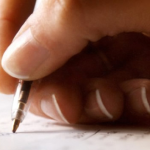Our knees get a lot of wear and tear, so here are some exercises and information about osteoarthritis in the knee by Ashley Misitzis PT, DPT. If you have any questions, come to San Diego Sports Physical Therapy today for help!
Knee osteoarthritis is one of the leading causes of disability among adults.
Osteoarthritis, known as OA, is characterized by degeneration of cartilage and bone, which cases pain, stiffness, decreased motion and weakness that can lead to difficulty with daily activities. There is no cure for OA, but effective treatment involves managing symptoms and addressing functional limitations. Physical Therapists are licensed health care professionals who are experts in the way the human body moves. Physical therapy uses researched treatment techniques to improve mobility, reduce pain, restore function and prevent disability. Want to improve your health? Learn more about LIVESTRONG.COM’s nutrition and fitness program!
RANGE OF MOTION
According to the CDC, Approximately 80 percent of patients with OA have some degree of movement limitation. Normal knee range of motion is zero to 135 degrees, though there is some variation from person to person.
Your knee must get all the way straight for typical walking mechanics, and must bend normally to allow for sitting and going down stairs. A Physical Therapist will improve your range of motion through direct measures, such as bending and straightening your knee, and will give you home exercises to focus on movement. Indirectly, helping to decrease pain and restore normal joint mechanics also improve your range of motion.
STRENGTHENING
When your joint is damaged, your body needs as much support as it can get from muscle strength. The first step is making sure the muscles directly surrounding the affected knee joint are strong. If you only have arthritis in one knee, then it is also important to strengthen the muscles in the other leg to help support the injured side and to prevent excess force on the healthy knee.
Your hip and ankle strength is also important to provide support to the knee with OA. During your physical therapy evaluation, your physical therapist will determine what muscles need strengthening. The earlier you seek treatment, the less likely you will have muscle strength changes, which improves the outcome.
STRETCHING
Many muscles in the leg cross over the knee joint, so ensuring they are flexible is an important part of the physical therapy process. When pain causes a decrease in your range of motion, it is normal for your body to change how it moves in order to compensate for weak muscles or lessen the pain. This compensation can cause tightness in muscles surrounding the knee including the calves, hamstrings, and quadriceps.
Other muscles may also need stretching depending on what the physical therapist finds during her evaluation.
MANUAL THERAPY
Manual therapy is a physical therapy treatment that involves skilled, specific hands-on techniques that mobilize the joint. These can be used to decrease pain, increase range of motion, lessen soft tissue swelling and improve tissue extensibility. In recent studies, the addition of manual therapy to an exercise-based physical therapy program resulted in dramatically improved function and less pain.
MODALITIES
According to the Arthritis Foundation, both heat and cold treatments are effective for pain management. Heat is best before an activity or in the morning to increase blood flow and decrease stiffness. Use cold treatment after exercise or at the end of each day to lessen swelling and pain. Use each modality for 10 to 15 minutes at a time.
REFERENCES
Centers for Disease Control and Prevention: Osteoarthritis Arthritis Today: Osteoarthritis: Using Heat and Cold for Pain Relief Move Forward PT: Facts Annals of Internal Medicine: Article by Deyle, G. American Academy of Family Physicians: Physical Therapy and Exercise for Osteoarthritis of the Knee
Article reviewed by Helen Holzer Last updated on: Aug 16, 2013
Read more: http://www.livestrong.com/article/178813-knee-osteoarthritis-physical-therapy/#ixzz2e88YONSq





